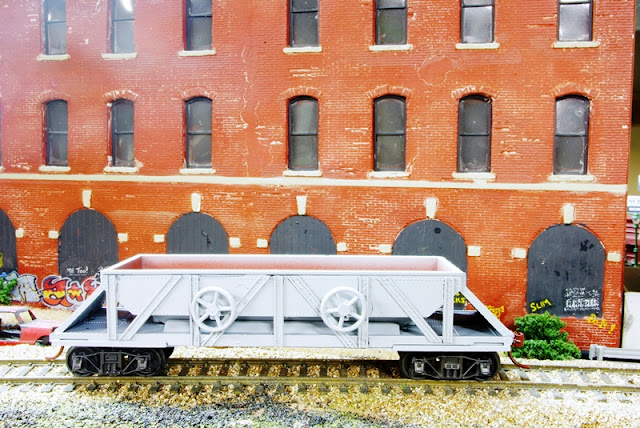But there was another trip where we went through Roanoke, VA, which of course was a holy place for railfans. I simply don't know why we went through Roanoke, as it wasn't on a logical direct route from New Jersey to Florida. My father wasn't interested in railroads, and my parents were actually never happy about my interest, which they now and then actively tried to discourage, so it certainly wasn't due to any rail interest on their part. There may have been a business reason for the diversion.
We went through Roanoke about 1961, when I would have been about 13. Steam would have been very recently phased out, but I was less interested in that than in the ex-Virginian electrics, which were still running. I do know we went straight through town, presumably on US Route 220 or 221, and crossed both the N&W and ex Virginian lines at grade. (I could tell the Virginian line because it had catenary over it!) However, I didn't see any electrics, or for that matter any ex-Virginian FM diesels. I did see a consist of four or five black N&W RS-11s running light on the Virginian line, but that was about it. My parents let me jump out and snap a photo of the N&W depot, which I still have someplace, but they had other things to move on with, and that was all the railfanning I ever got to do in Roanoke.
I always liked the N&W, but since it ran east-west and we always drove north-south, I just got glimpses. I still model N&W as one of my "majors". Here's a Life-Like/Proto GP9 that I just installed DCC in today:
This model is about 15 years old. Although it has an 8-pin socket, converting it to DCC is more than minimal work, since the old Proto GPs had a problem with cracked axle gears, so you need to replace these on all four axles to get them to run well at all. You also have to replace the 1.5 volt incandescent bulbs with either 16 volt (my choice) or LEDs with resistors. So the whole job is maybe 2 hours, but the result is pretty nice. Here's the 710's sister, which I did several months ago:
A very early Atlas/Kato RS-11, which i got undecorated and painted and detailed for N&W. I converted it to DCC not long ago.
An Atlas Classic RS-11 in the later post-1964 "hamburger" scheme:
So I'm getting close to being able to run some of the four and five unit diesel consists that I wished I'd seen more of as a kid.






























